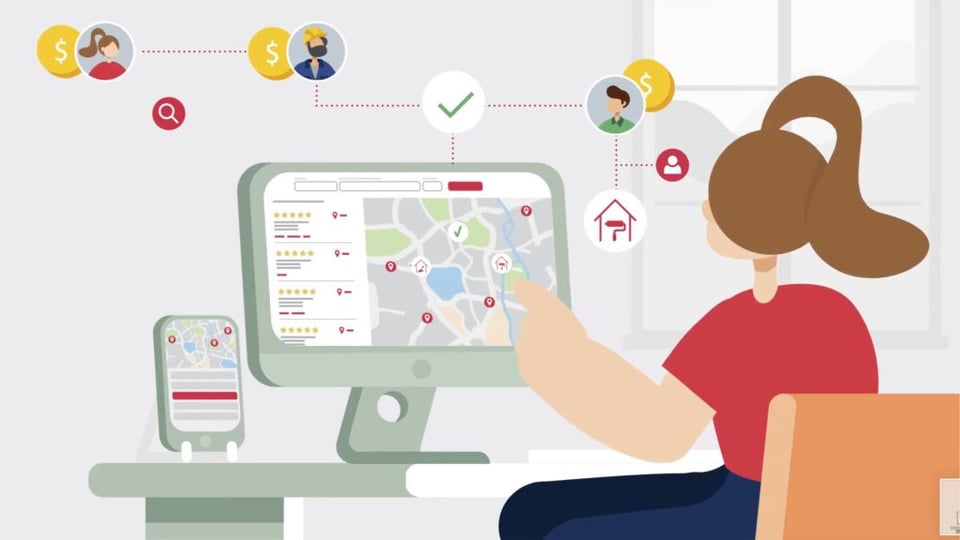With all of the “real” challenges building materials manufacturers face on a daily basis – supply chain issues, labor shortages, shipping delays, to name just a few – the last thing you need is customers thinking you’re out of business.
The good news is that monitoring a few key items can help ensure your customers don’t mistakenly assume you’re permanently closed.
We asked Patience Jones of Graphicmachine to provide the top 10 things that can make building materials manufacturers look like they’re out of business and how to fix them in order to keep your business up and running.
Why It’s So Easy for Customers to Assume You’re Defunct
There used to be one source of truth for customers to gain information about a business: the business itself. Customers could call the business or visit the business in person if it was local. There was no mistaking that a business was closed, because a buyer could immediately confirm with a human being.
Today, building materials customers get their information from a seemingly infinite number of sources: manufacturer websites and social media channels, dealer websites and social media channels, other customers’ social media accounts, review websites, and directory listings.
Each one of these sources sends signals to customers about the current state of your business. When a customer sees information that is inconsistent or doesn’t look recently updated, they often assume that the business is no longer operational.
The other reason it’s so easy for people to leap to the conclusion that a business is closed is because of what they may have read or heard about the current state of the building industry. Whether they have accurate information isn’t the issue. If they believe the building industry is in dire straits, they are more likely to believe that a materials manufacturer is out of business than they would have been several years ago.
It would be nice if building materials manufacturers had the opportunity to clear up this misunderstanding, but the truth is that prospective customers will simply move on to the next manufacturer on their list.
Top 10 Signals That Cause Customers to Think Your Business Is Closed
Of all of the potential signals coming from different sources, there are ten that carry the most weight in whether building materials manufacturers look to still be in business. While they are easy to remedy, the most important thing is making sure that you’re paying attention to them before they cause problems:
1. Your website is down or you don’t have one.
This is one of the most important signals. If you don’t currently have a website (especially if you used to have one), it looks like you aren’t in business anymore. Having a “Coming Soon!” page serves only to tell prospective customers that at some point you started working on a website and at some point in the future between today and infinity it will be live. The perceived lack of urgency tells customers you’re not an active business.
How to fix it: If you don’t have a website, get one. If your website is down (either because it’s broken or you’re waiting for a new one to be built), put up a straightforward landing page that looks professional and makes it clear you’re still interested in earning your customers’ business.
2. Your phone number doesn’t work, or no one picks up the phone.
Clients may prefer to speak with someone over the phone. If the number on your website, social media, review sites, or directory listings is incorrect, people will assume you’re out of business. The same is true if the number is correct but no one answers.
How to fix it: First, check your website, social media, and everywhere your business is listed to make sure the phone number provided is correct. If it’s not, correct it or request a correction from the site owner. Second, make sure the phone is being answered during normal business hours. If you don’t have internal staff to cover the phones, consider an outsourced option.
3. The copyright date on your website is missing or outdated.
Most websites display a copyright date in the footer of their website. Legal reasons aside, the copyright date is a signal to both humans and search engines like Google that your site is current. When the copyright date is something other than the current year, it sends the message that the year listed is the last time your website was updated. Customers make the logical assumption that you weren’t in business after that date.
How to fix it: Simple – add a copyright date that is the current year, and update it every January 1. There are scripts and plug-ins that can automate this for you.
4. The content on your website was last updated years ago.
Do you have a blog? Great! You last updated it in 2018? Less great.
Any content on your website that features a date, whether it’s blog posts or a banner announcing a new product coming to the market in 2020, tells your building materials prospects when the last time anyone at your company paid attention to the website. If there doesn’t appear to be any recent activity, people can assume you’re closed.
How to fix it: If you have a blog, either update it more frequently or edit the template so that the publication date is not displayed. If your ten most recent posts include anything that is clearly date-specific and aged (“How We’re Planning for Y2K,” for example), remove it. Audit every page of your site to make sure there are no references to dates that have passed.
5. Something on your website is clearly broken.
When something on your website breaks, which it will, failing to fix it makes it look like you aren’t paying attention or don’t care because you’re not in business anymore.
How to fix it: You’ve probably guessed this one: fix the thing that’s broken. Whether it’s a broken link, an image that won’t load, or a form that won’t allow submissions, fix it.
6. Someone has marked your business “closed” on a review site or Google My Business.
From time to time, businesses are marked “closed” by review sites or Google My Business because someone unrelated to the business clicked a button that said “Report this business closed.” Sometimes the person thinks you really are closed for good for the very reasons we talk about in this blog post. Sometimes the person knows you aren’t really closed but is angry with your business for some reason.
How to fix it: Contact the site that shows your business as closed and request that they reverse this. The sooner you catch the error, the better. Also, make sure you’ve claimed your Google My Business account. It’s free, and it means that Google will notify you if someone tries to say your business is closed, so you can reject the change.
7. You used to respond to social media posts and reviews but haven’t in years.
This isn’t about whether social media is an effective tool for your business; it’s about consistency. If you used to do something and now you don’t, people can view that as a signal. They assume the reason you’re no longer doing that thing is because you’re out of business, not because you’re overworked or didn’t see the value or had to reallocate internal resources.
How to fix it: Start responding. Even if it’s a “like” of a positive customer post or a “we’re sorry to hear about your experience, please contact us directly” post to a negative review, you need to say something. Creating an internal guide for how your company should respond to different kinds of posts and reviews will make it so that you can delegate this work.
8. You have social media accounts but haven’t posted to them in years.
A slightly different issue than the one above, but for the same reason: if you used to do it and don’t anymore, people assume it’s because you’ve closed up shop.
How to fix it: The most obvious fix is to start posting on a regular basis. If you used to post to a channel that is still popular but not the right fit for your company anymore, consider a post that lets followers know where you are active – and repost that every so often. Don’t delete your social accounts just because you’re not currently using them. That will release your handle to the public market where anyone else can grab it (even your competitors).
9. The e-commerce functionality doesn’t work.
If you sell your building materials directly through your website, it’s imperative that the e-commerce function work. There are many places where online sales can break down, from something amiss with your site to an issue with your payment processor. Customers assume that sales are important to an operating business, so if your site is supposed to process sales online and doesn’t, it can signal that you’ve shut down.
How to fix it: At the risk of being repetitive, fix the issue. If the problem isn’t something you have control over, work with the entity that can get it fixed. Post progress updates on your site and offer customers another way to buy – and something (a discount, free shipping) for their trouble. Once the immediate problem is fixed, focus on being proactive. Schedule your e-commerce pages for routine internal testing (by people, not software). Make sure you maintain good relationships with your e-commerce partners year-round so that when something malfunctions, you have people you can reach out to directly.
10. Your distributors are active on social media but haven’t mentioned you in a long, long time.
If you sell your building materials through distributors, those companies should promote your products on their website and social media channels. Some distributors aren’t active on social media – but for those that are, you expect to see your products in regular rotation. When your distributors are mentioning everyone but you, this can send the message that your business is defunct.
How to fix it: Unless your contract allows, you can’t force distributors to mention you on social media. (If you could force them, you might not like the kinds of mentions you’d get.) Instead, find out why the distributors aren’t posting about your products and address any concerns they might have. Make it easy for them to post by providing a place where they can access quality, high-res photos and complete project descriptions without having to contact you.
You’ve worked hard to keep your business operational and on a path for continued growth. Make sure things that can be easily fixed aren’t sabotaging your efforts.




